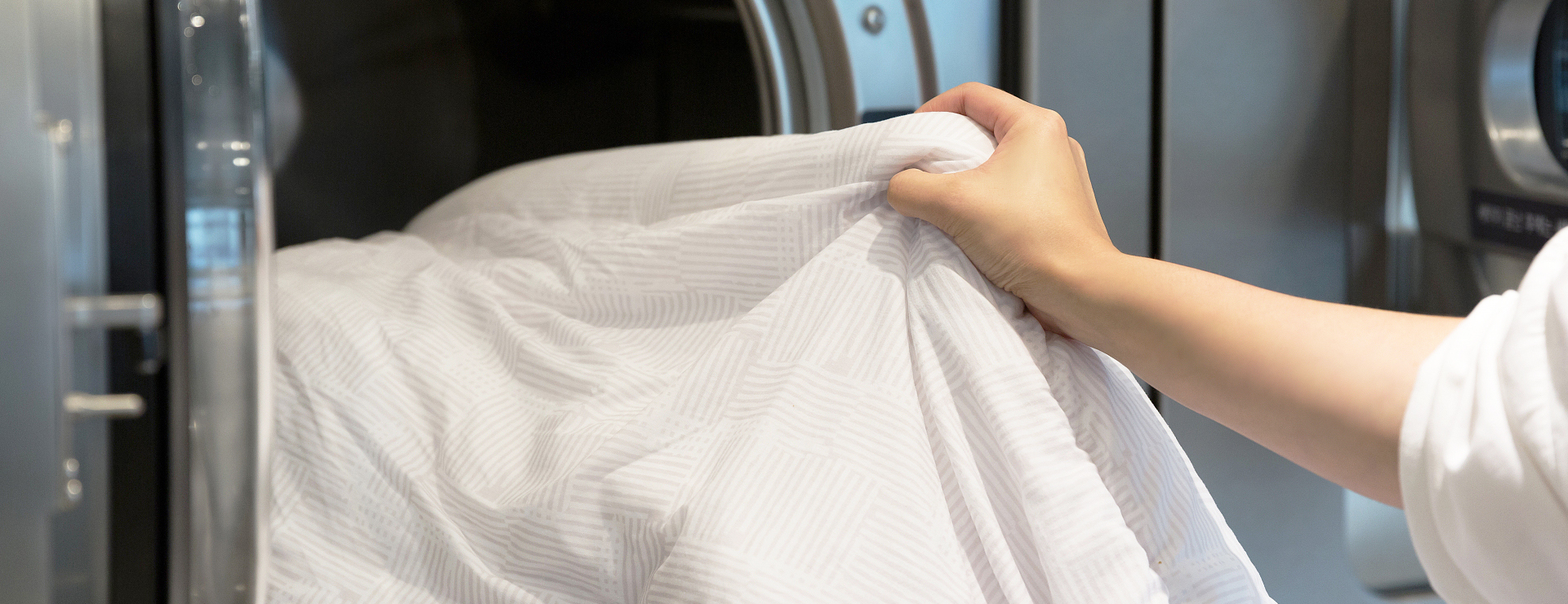How to effectively extend the service life of linen
Washing standards for linen
The washing frequency of hotel linens is clearly specified in the national standard:
Colored towels should be washed no more than 120 times
Cotton tablecloths and mouth cloths should be washed no more than 80 times
Chemical fiber tablecloths and napkins should be washed no more than 120 times
First class quality white towels should be washed no more than 80 times
Cotton bed sheets and duvet covers with yarn count greater than 60 seconds should be washed no more than 120 times
Cotton bed sheets, duvet covers, and pillowcases with yarn count greater than 40 seconds should be washed no more than 100 times

Several factors affecting the lifespan of linen
1. Rough sorting before washing can cause sharp or hard debris to damage the linen during washing.
2. Poor uniform distribution during washing and dehydration or prolonged high detachment time, resulting in mechanical force causing tearing.
3. The washing time is too short, resulting in residual detergent.
4. The linen is contaminated with corrosive chemicals.
5. During the washing process, the linen is scratched or worn, manifested as yarn pulling and breakage, followed by small holes that gradually enlarge.
6. The quality of the fabric itself and the storage environment.

How to ensure the service life of linen
① Washing process
The washing process is one of the important factors affecting the lifespan of linen. The correct washing process includes multiple steps such as sorting, pretreatment, main washing, rinsing, neutralization, softening, dehydration, and drying.
1. Sort before washing, including checking the types of linens and separating debris. Pay attention to transportation to prevent secondary pollution and accidental breakage.
2. Pre treatment, especially for stubborn stains, can effectively remove stains, reduce the difficulty of main washing, and protect the fibers of the linen from damage.
3. In the washing process, detergent should be used correctly, with reasonable addition time and temperature, understanding of the basic characteristics and usage methods of detergent, avoiding direct contact with chemicals with strong acidity or corrosiveness, or using strong detergents or bleaching agents to avoid damage to the linen.

② Type of linen
1. Different types of linens require different methods for washing and maintenance. For example, bedding such as bed sheets, duvet covers, pillowcases, etc. should be washed gently, while towels require stronger washing procedures and regular disinfection. The selection of the yukata washing and dehydration program should be moderate, and the single dehydration time should be controlled within 3 minutes. It is recommended that the maximum washing temperature should not exceed 60 ℃.
2. When washing towels and bath towels, attention should be paid to the time and temperature of pre washing, intermediate removal, main washing, intermediate removal, over washing, and neutralization. It is recommended to add universal powder (laundry detergent), emulsifiers, and bleaching agents for main washing, and neutralizing powder and softeners for neutralization to ensure washing quality, comfortable touch, and safety.
3. In addition, the material of the linen is also a factor to consider. For example, pure cotton linen is more durable but prone to wrinkling and fading, while polyester linen is less prone to wrinkling and fading but prone to static electricity. Therefore, when selecting the type of linen, it is necessary to comprehensively consider factors such as usage requirements, quality, and cost.
4. Linen should also avoid "fatigue use", with a minimum interval of 24 hours between use and washing to prevent excessive washing and reduce the lifespan of the linen.
5. New and old linens should also be classified and treated accordingly. Natural and abnormal damage to old linens should be treated differently, and the length of dehydration time should also vary depending on the strength of the new and old linens.
6. If damaged linen has already been produced, it can also be reused by changing from large linen to small linen, sewing, or changing to other uses to extend the service life of the linen and avoid direct scrapping.

③ Washing equipment
1. The quality and performance of washing equipment also have a crucial impact on the lifespan of linen. Not only can it provide better washing results and effectively protect the linen fibers from damage, but it can also improve washing efficiency and reduce labor costs through automatic temperature control, automatic water level control, automatic program selection, etc.
2. When washing the linen machine, it is necessary to regularly check the machine to prevent secondary pollution and human damage. The loading capacity during washing should be controlled at around 80% -85%. Too much or too little can affect the cleanliness and wear of the linen. Before washing, the machine drum should be checked empty to see if there are sharp objects or debris left inside, in order to avoid scratching the linen.
In summary, the correct washing process, selection of linen types, and choice of washing equipment are important factors in improving the service life of linen. At the same time, proper management and maintenance of linens can not only improve the service quality of hotels, but also reduce operating costs, thereby enhancing the economic benefits of hotels.



